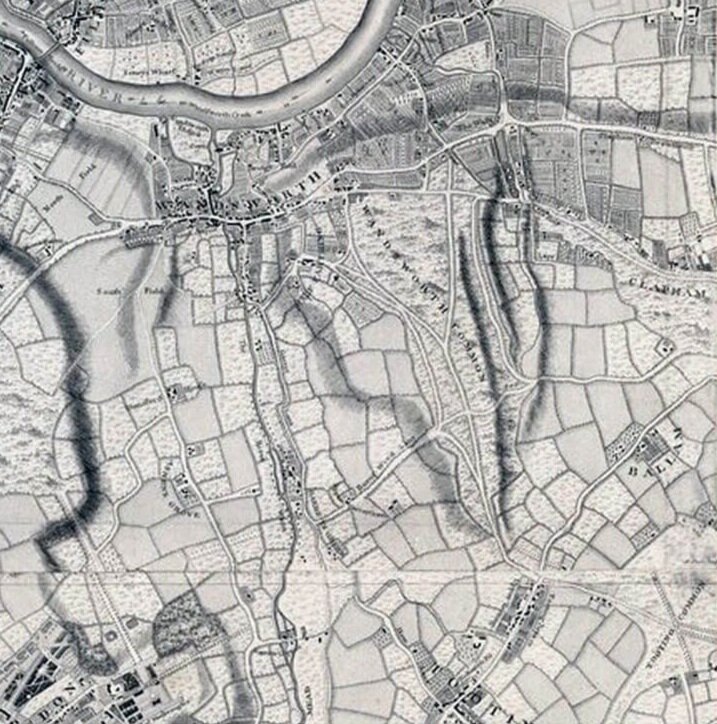Thank you Adrian for giving us the essence of JCB and his role in saving the Common. If you’re looking for a spirited account of the events leading up to 1871, you certainly need look no further than the final chapter of his autobiography ‘A Village Politician’.
And the booklet prepared by Dolphin Year 4 pupils also ends very fittingly with – ‘me and all the others who enjoy this [Common] owe him a big thank you’. Here, here to that!
JCB is rightly our prime focus today but the plaque also acknowledges “others since the Wandsworth Common Act 1871 who have campaigned and worked to keep our Common ‘at all times open, unenclosed and unbuilt upon’” – that last phrase in quotes is from the Act itself.
So I will focus on these ‘others’ after JCB, some known but a much larger number unknown, and all of you are here today because you either have or have had some role in making the Common what it is today.
Some of you also know a lot more of the history than I do. Fortunately, there’s an excellent new book which tells me pretty much everything I need to know. And I would like to add my huge thanks to everyone involved in the production of our highly acclaimed book ‘The Wandsworth Common Story’.
So, JCB had help of course – from his colleagues in the Wandsworth Common Defence Committee and later the Preservation Society. People such as Edwin Ransome, James Rose, Robert Hunter, who went on to co-found the National Trust, and numerous others who helped fund the Bill, led by Henry Peek MP.
Then there were the 8 Conservators who managed the Common for the first 16 years after 1871, using a model still used on Wimbledon Common. Perhaps if that model had survived we’d have a mounted ranger patrol to police the bylaws!!
Their first objective was to preserve what was left, stop gravel extraction, remove builders’ rubbish, unauthorised animals and encampments…….much like today really!!
Paths were restored and tree planting began, funded by public subscription, including the horse chestnuts still fringing the cricket field. So our anniversary tree funding which has raised almost £12,000 is very much in the spirit of the founding fathers. The lake was also built at this time, from a former gravel pit, but by largely unknown local philanthropists.
It soon became clear, and this is a recurring theme, that views differed about how to manage the Common – those who favoured a wilder, natural look and those who preferred more formal layouts. The result you see today is quite a successful mixture.
In 1887 the Metropolitan Board of Works took over and the following year the LCC
They achieved the return of what is today’s cricket and rugby pitch and created the bowling green – one of the oldest in London and the only public green surviving in Wandsworth, which we are gradually getting more people to use. They also put in the tea rooms in Neals Lodge and many thanks to today’s tea room – Skylark Café - for providing our afternoon tea.
The LCC also began another phase of tree planting, including the famous Avenue
We know very little of the individuals making these decisions, but they clearly left a very important mark on the Common to this day.
The GLC became responsible for the Common in 1965 but it devolved to WBC in 1971.
This was the same year the Wandsworth Society was founded – celebrating its own 50th anniversary this year - which took a keen interest in Wandsworth Common from the start.
This was a time of major local development. The Trinity Road dual carriageway was a major encroachment but the Act included the principle of land compensation – whatever is taken from the Common must be replaced with something of equal value.
This was also the era of Shirley Passmore – the Society’s early chair - who some of you will fondly remember but we sadly never met. She is certainly one of the significant ‘others’ to whom the plaque is dedicated.
In 1986, the GLC was abolished and the Council asked the Wandsworth Society to set up the Management Advisory Committee – the MAC – and Shirley was its first chair.
The MAC has been going for 35 years and under former chair George Meakin and current chair Chris Metcalfe now has a new management plan to advise on. We also have former chair Charles Walton and his wife Aviva here today who both worked tirelessly for over a decade in the interests of the Common. Among their many legacies are a windmill in much better repair; a lovely map of the Common; a constant supply of candy-striped bags of eco friendly swan and duck food which generates useful income for the Friends; and a lasting description of the Common as ‘our own piece of countryside’ – a phrase I think JCB would have liked. We wish Charles and Aviva well as they are soon to leave the area which will be a great loss for the Common.
Last but not least we have the Friends – launched 3 years ago to reach out to users in a way the MAC was not set up to do but which to its credit it realised was necessary. We now have over 600 members of which around half are actively engaged in our social and volunteering activities. That’s a lot of people to help with activities such as litter picking, woodland management, hedge and wildflower planting, schools outreach, book writing etc. We pride ourselves on working closely with the Council and with Enable, both strongly represented here today, to help carry on the work made possible by JCB and those who followed him.







